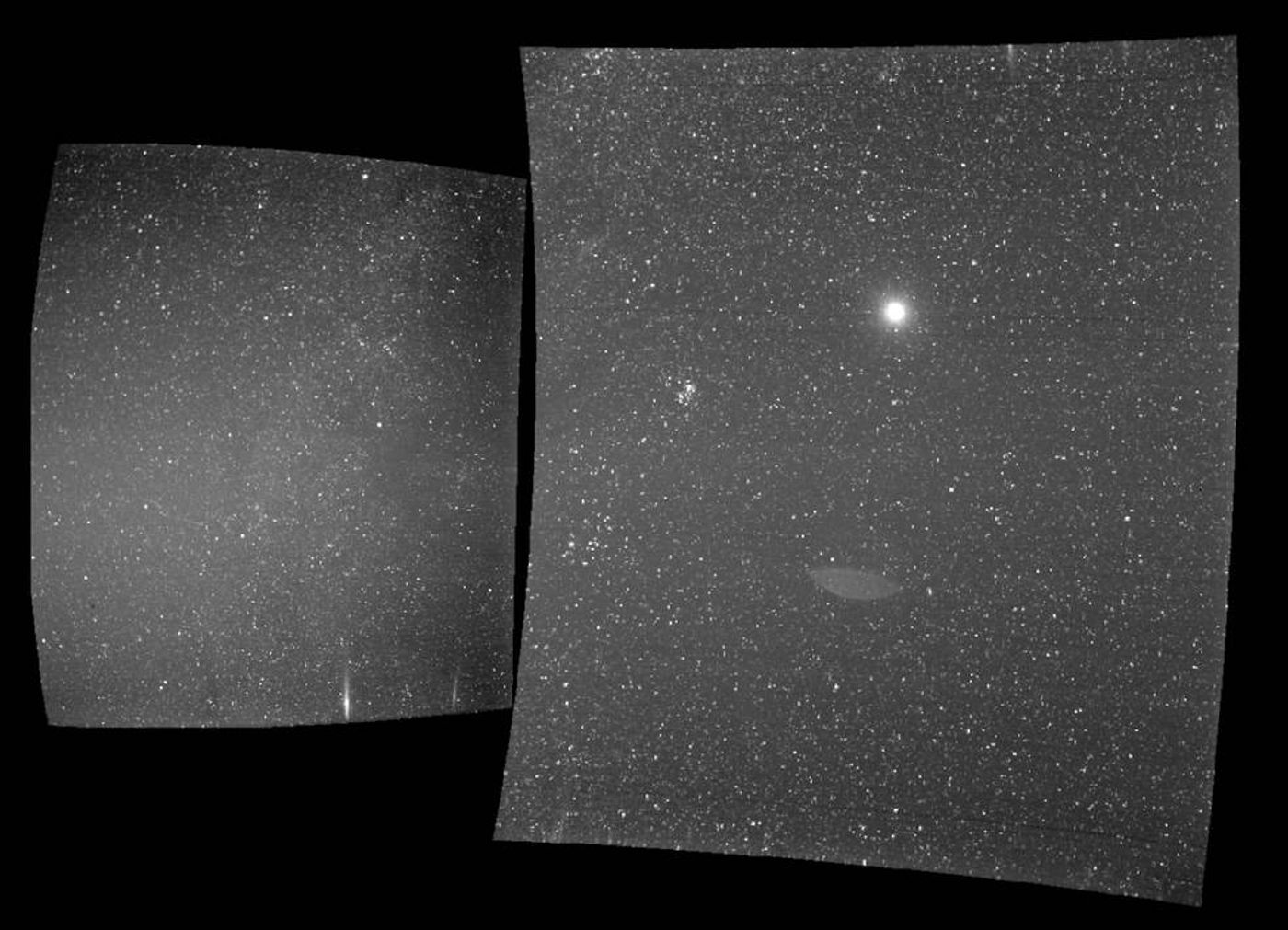NASA's Parker Solar Probe Snaps a Picture of Earth
Back in August, a Delta IV Heavy rocket ignited its engines and lofted NASA’s highly-anticipated Parker Solar Probe into space. Just over one month later, the spacecraft flew past Venus, exploiting the planet’s gravitational influence to pick up speed in a maneuver known as a gravity assist.
Like with most spacecraft milestones, NASA took full advantage of the opportunity to excite its mission with a captivating photograph captured with the Parker Solar Probe’s only onboard camera, the WISPR (Wide-field Imager for Solar Probe) instrument.
Image Credit: NASA/Naval Research Laboratory/Parker Solar Probe
The resulting image, shown above, illustrates the Earth as an ultra-bright sphere in the right-hand frame. Earth appears as bright as it does in the picture because of all the sunlight the planet’s atmosphere reflects back into space.
Analysts at NASA explored the image further by zooming in as far as they could on the bright sphere. Upon doing so, they discerned a slight bulge on the right side of the Earth that NASA says is our Moon:
Image Credit: NASA/Naval Research Laboratory/Parker Solar Probe
The disk-shaped object just underneath the Earth in the frame is merely a lens flare and nothing of importance; these are particularly common whenever a bright object appears in a camera’s frame.
Apart from the fascinating picture, NASA’s status update also confirms that the Parker Solar Prove is alive and well in outer space. It’s poised to fly closer to the Sun than any other spacecraft before it. There, it will investigate the properties of the Sun’s magnetic fields and solar storms, among other things.
Related: Here's why NASA is sending a spacecraft to the Sun
When the Parker Solar Probe reaches its destination, it will endure hellish temperatures exceeding 2,500 degrees Fahrenheit. To insulate the spacecraft’s sensitive scientific instruments from this heat, NASA installed a revolutionary heat shield comprised of a 4.5-inch-thick carbon foam core sandwiched between two carbon composite layers.
The Parker Solar Probe is expected to survey the Sun for at least seven years. The data it collects will be sent back to scientists on Earth for analysis such that we can better understand the dynamics of the Sun.
Source: NASA










